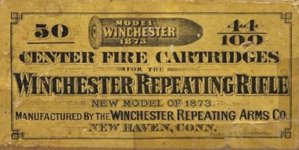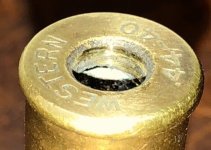Up above in the 1980-present Section, "Special state of mind", there's a picture of someone's 44-40 (Nice gun, BTW). Please be gentle with my ignorance, but is that a special gun/chambering for that cartridge or can it be used in any .44 Mag or Special? I never really paid attention, but I kinda thought it was made for rifles only? Maybe?
I DO like shooting the .44Specials out of my 629-6 for nice follow up shots and my middle finger doesn't get the devil beat out it from the stupid trigger guard. But this is a question about 44-40.
Can anyone (try to) set me straight on this?
Thanks! Jeff T.
Edit: I'm not talking about the OP's post but someone else's pic below that one.
I DO like shooting the .44Specials out of my 629-6 for nice follow up shots and my middle finger doesn't get the devil beat out it from the stupid trigger guard. But this is a question about 44-40.
Can anyone (try to) set me straight on this?
Thanks! Jeff T.
Edit: I'm not talking about the OP's post but someone else's pic below that one.
Last edited:









